The world’s best beaches, wherever you’re wintering
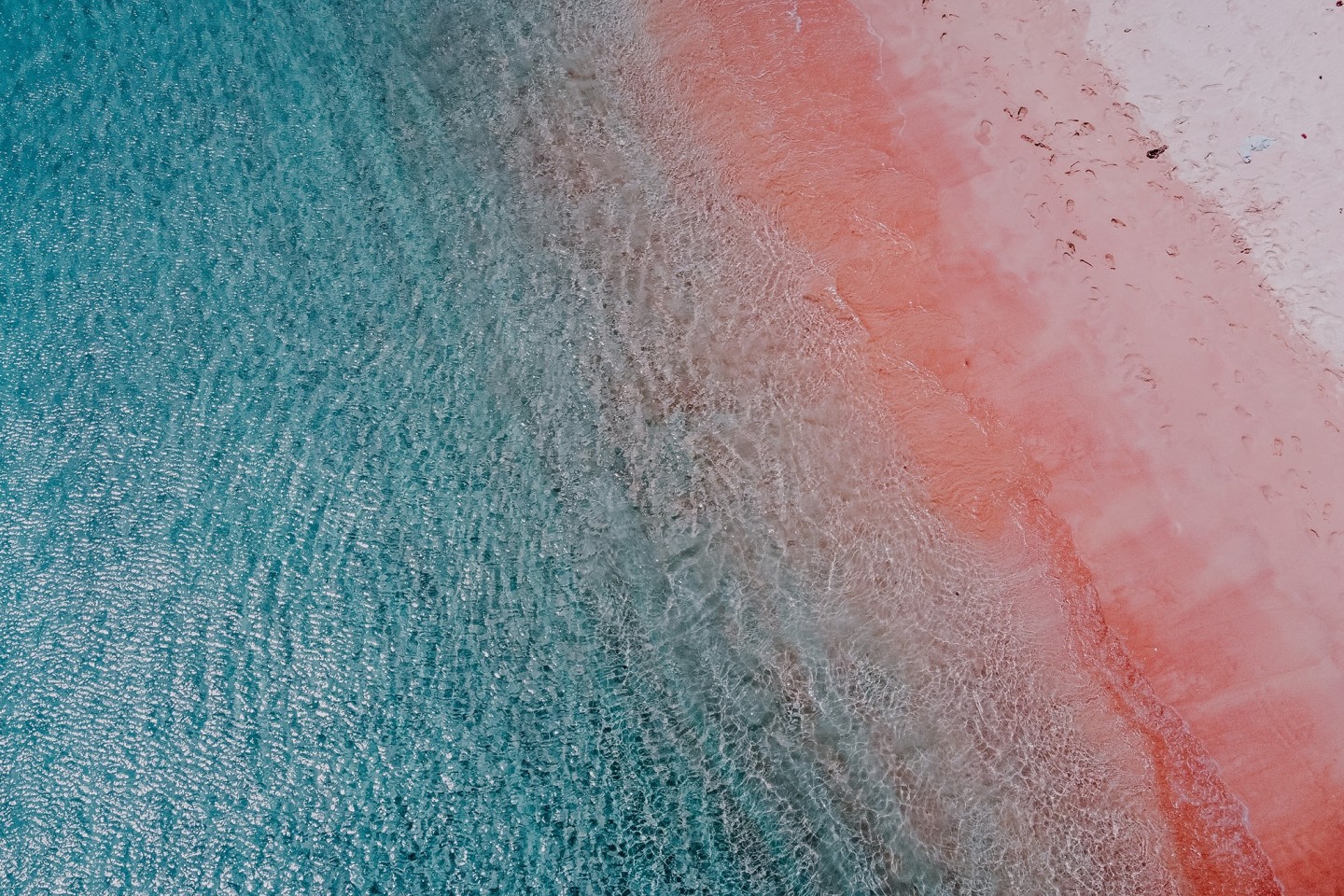
Roula Khalaf, Editor of the FT, selects her favourite stories in this weekly newsletter.
Sidi Ifni, Morocco
Legzira
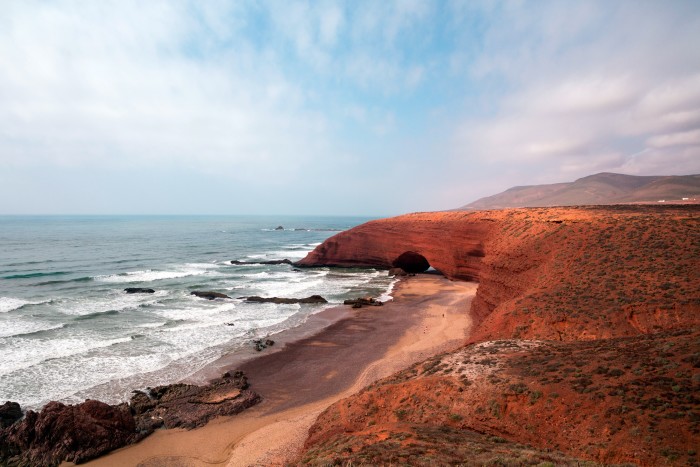
It’s one of the more sacred-feeling encounters of earth, sea and sky I’ve seen. Legzira has long been famous for its arches: these low passages have been formed over millennia in the three massive promontories of red rock and soil, and they reach like fingers across the beach itself – at low tide, a huge, dull mirror of rusted pewter – into the grey Atlantic. One of these collapsed in 2016, occasioning the birth of a whole class of “I was there when…” gypset surfers and world-wanderers, who seem to miss the point that Legzira is still singular, and very beautiful. It’s an easy day trip from Agadir or Tiznit, and the nearby town of Sidi Ifni has a handful of guest houses for anyone wishing to commune with the scenery a bit longer.
Sylt, Germany
Weststrand
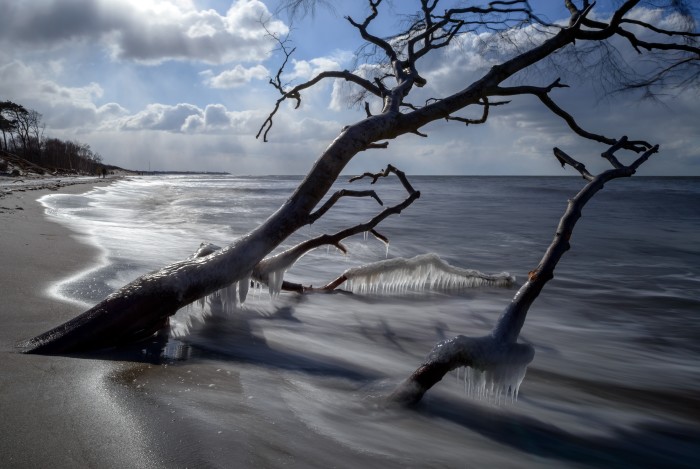
Sylt is one of Germany’s northernmost North Sea islands, and this northernmost of Sylt’s beaches is technically above the border, putting it – sort of – in Denmark. As long and thin as the tall grasses that ripple all up and down its coastline, Sylt is buffeted by winds much of the year. The bliss that’s specific to Weststrand is in its pristine cleanness, and its emptiness; cycle over from the town of List, through tall, heathered dunes to an improbably white, undulating strip that disappears into the southern horizon, it’s so long. The sea is shallow, cold and clear; the sand marked here and there with striations of seashells, mostly long razor clams, fragile and nacreous. Pull your anorak over a thick jumper, pack a flask of whatever, and walk in near-solitude all the (short) day long.
Byron Bay, Australia
Wategos Beach
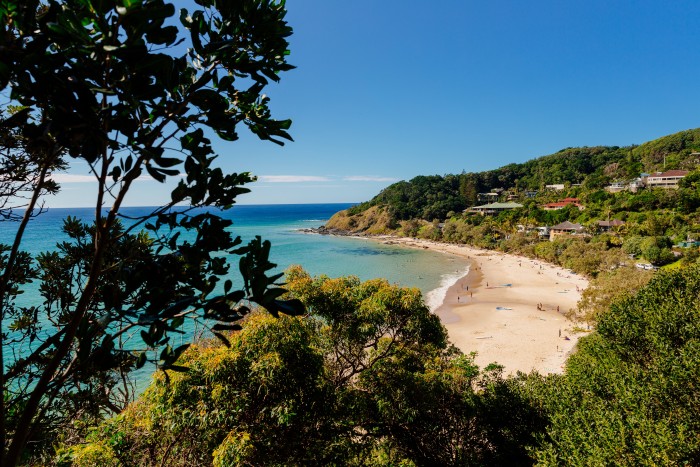
Designating one beach to rule them all in the Lucky Country was almost as difficult as doing so in California, both places that trade heavily on their abundant stretches of inviting coastline. But across a multitude of categories – swimmability, natural beauty, social scene, accessibility – 600m-long Wategos, in Byron Bay, really does come out a winner. Sandy, shallow and usually with reliably moderate surf – great for long-boarders and learners – it’s a young-family stalwart (though among those families a Hemsworth or two might be disporting). Little Wategos, a secluded proposition at one end, is Australia’s easternmost beach. Picnic tables and barbecues are scattered about, and there’s a pandanus-lined rainforest path leading from the sand up to the Cape Byron Lighthouse, where the pretty vistas abound.
Big Sur, California
Pfeiffer Beach
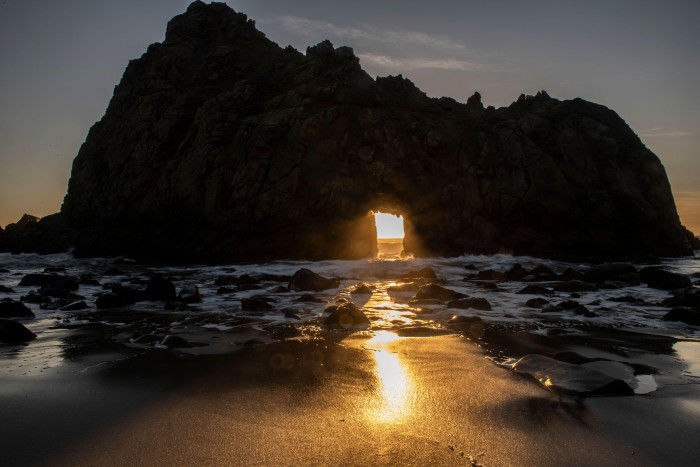
It’s had star turns in From Here to Eternity and The Sandpiper. Its severe beauty is ur-Northern California. The currents can be treacherous (even for the steely local surfers, who tend to prefer Andrew Molera State Beach, a few miles up the road), and the water temperature is diabolically frigid in high August, let alone mid-winter. But Pfeiffer is elemental and unforgettable, starting from the turnoff from Highway 1 in Big Sur (good luck finding it; many visitors don’t), which winds down through the primeval pines, sycamores and ferns of Los Padres National Forest, past creeks and paddocks full of llamas and a house where Beach Boy Al Jardine once lived.
Park in the camping lot, walk down the sand path past a guard of gnarled cypresses, and emerge into a dynamic landscape of boulders and cliffs, sand streaked an otherworldly purple (that’s manganese deposits), and the truly mighty Pacific. If you’re very lucky, you might catch one of the handful of days in December or January when the sunset can be seen directly through the opening in Keyhole Rock, just offshore.
Wellfleet, Massachusetts
Marconi Beach
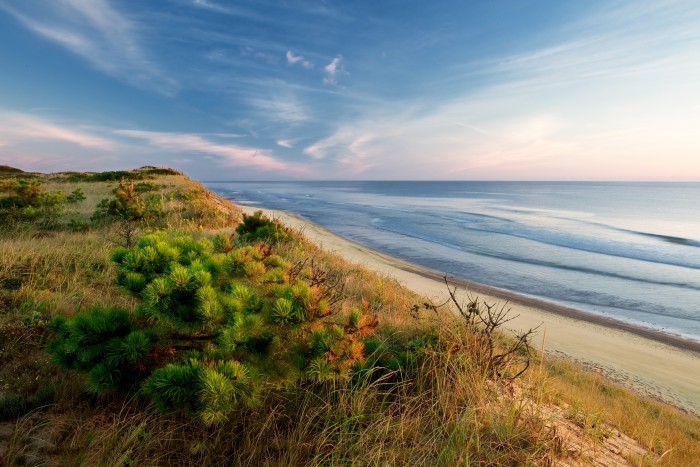
The Cape Cod National Seashore is winter-beach heaven: grassy dunes and silvered-wood picket fences; moody ocean and moodier, mutable skies; bracing wind in your hair and the tang of salt and brine lacing the air. Marconi is part of this protected area, which runs along the Atlantic-facing side of the long, skinny forearm formed by the flex that is the Cape itself. At low tide, you can walk its length on a relatively flat stretch of sand, from Lecount Hollow Beach all the way down to the Nauset lighthouse – miles of you and very few others this time of year (though Marconi is close to impassable some high-summer days). The pre-colonial town of Wellfleet, sitting in the crook of the Cape’s elbow, is a short-ish drive inland, for sweet oysters and solid local craft beers.
Komodo Island, Indonesia
Pink Beach
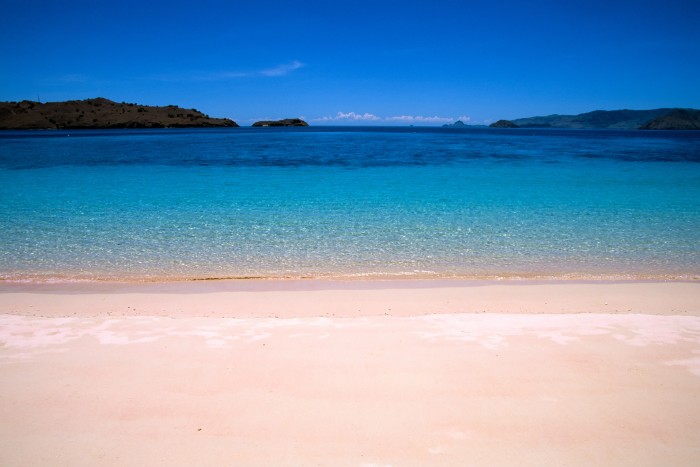
Not at all easy to get to, which is sort of the point, and northern-hemisphere winter is the (very) warm rainy season in Indonesia’s Komodo Archipelago, which further reduces the human numbers you’ll contend with once you arrive. Pink Beach is world-famous, much-photographed and, in the high-season, unnervingly over-visited. But what a place in the off-season: running along the edge of a small peninsula on the east side of Komodo island itself, it’s best (possibly still only, depending on weather) reached by boat. There are no concessions and no cafés, so pack your own water, mangoes and umbrella. What there are, are coral reef systems and marine life in abundance, and right-off-the-shell-pink (yes, really) sands; so pack snorkels and fins too.
Auckland, New Zealand
Piha Beach
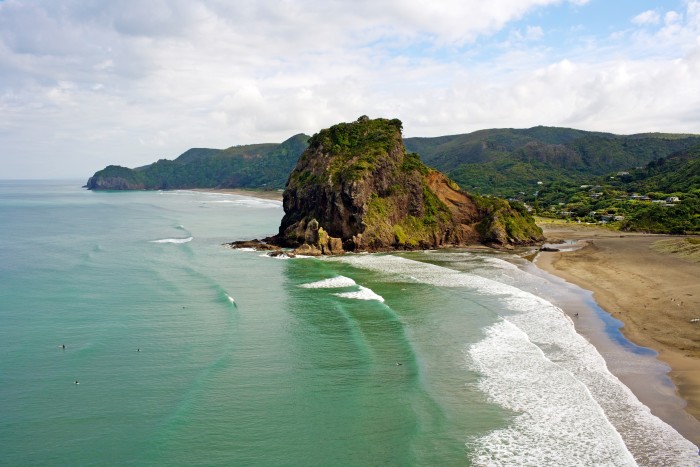
There are more conventionally beautiful beaches in the country. And definitely more sedate ones; but who wants sedate when there’s Middle-Earth-calibre majesty to be had? Whereas greater Auckland’s east coast tends to white sands and turquoise waters, the west coast, beyond Waitakere Ranges National Park, has to contend with the far rougher Tasman Sea, which powers in from Australia. So even in summer, wind and waves thrum over Piha’s black sands (the region is a 20-million-year-old volcanic one, sitting as it does at the junction of two tectonic plates); it’s one of Auckland’s most popular surfing beaches. Technically divided into two, North and South Piha, by Lion Rock, it’s also an ideal walking beach; the wide, flat North section alone is more than a mile long. In December, crimson swaths appear across the emerald cliffs and gullies that surround the beach, as the native Pohutukawa trees bloom.
Costa Rica
Playa Samara
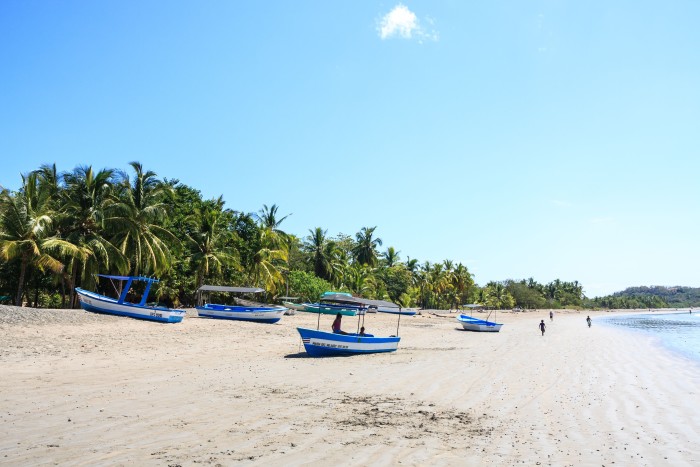
Another all-rounder, in a country where the opinions on beaches skew impassioned and deeply partisan. In the southern reaches of the Nicoya peninsula, whose hilly jungle tumbles far out into the Pacific (probably hard to find a bad beach here, in terms of photogenics anyway), it’s easy for swimming and easy for learning to surf, with an eponymous town full of cafés and the odd yoga retreat. The long ribbon of creamy-white sand is soft, bordered by a dense fringe of palms. Like the rest of the country, it has its American-heavy contingent of expats, but arguably still fewer than Punta Islita, directly south, or Nosara to the north.
St Barths
Colombier Beach
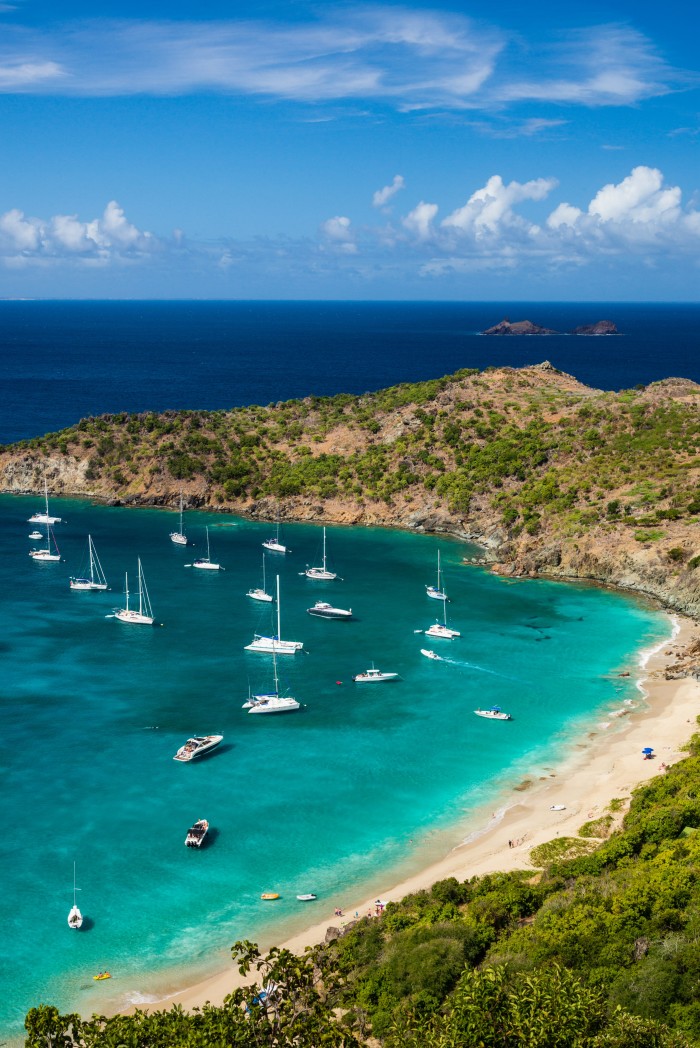
Part of St Barths’ charm is that despite its seasonal critical mass of beau monde there remains something genuinely unpolished about its further reaches. Colombier is one such place: lining an indentation at the far north-west tip of the island, it is still reachable only by boat or on foot, following one of two trails (the easier one’s accessed from Petit Anse) – just you, the odd iguana, and from the higher points, Caribbean views for days. The sand is blinding salt-white, the water a palette of gemstones. Not quite castaway feels – probably too many yachts and Calypso micro-bikinis for that – but still a reward in itself.
Norfolk, United Kingdom
Holkham
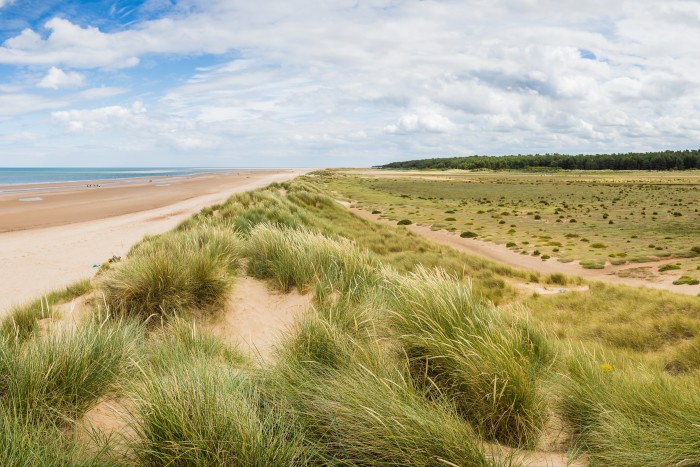
Bias alert: despite having spent weekends at a charming house in west Dorset, just above Chesil Beach, for years when I first lived in the UK, it is North Norfolk that became, the first time I saw it, my personal acme of British coastline. First, the light: hard, true, somehow unmistakably North Sea, laying a distinct architecture of shadow across the flat marshlands and low towns on late-winter afternoons, making you wish you were a painter so you could capture it.
Then, the skies: big. Holkham Beach is part of a nature preserve, so the pine forests surrounding it remain undisturbed, sand paths weaving gently through them; in winter, they hiss and sigh endlessly in offshore winds. Zero commerce, no lifeguards: definitely a BYO stretch of coast, though there’s coffee and ice cream kiosks in the parking lot, and excellent fish and chips just down the road at French’s in Wells-Next-the-Sea.
Northumberland, United Kingdom
Alnmouth
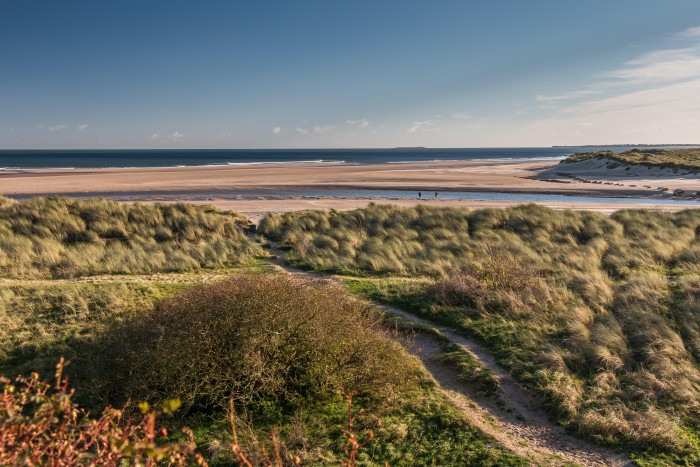
A postcard-pretty confluence of river estuary and North Sea, Alnmouth’s sandy beach is backed by low grassy dunes and a village dating back to the 12th century. The main beach is shallow and very swimmable; lone walkers and those with dogs in tow can take the dirt track that splits off from the main road leading out of town to the more deserted stretch of sand on the other side of the estuary; it stretches south for a couple of miles before merging with Warkworth Beach. In winter it’s bracing, and sometimes frost-covered – ideal for an edifying walk, after which there are plenty of fireside tables in the village to be claimed.
Comments